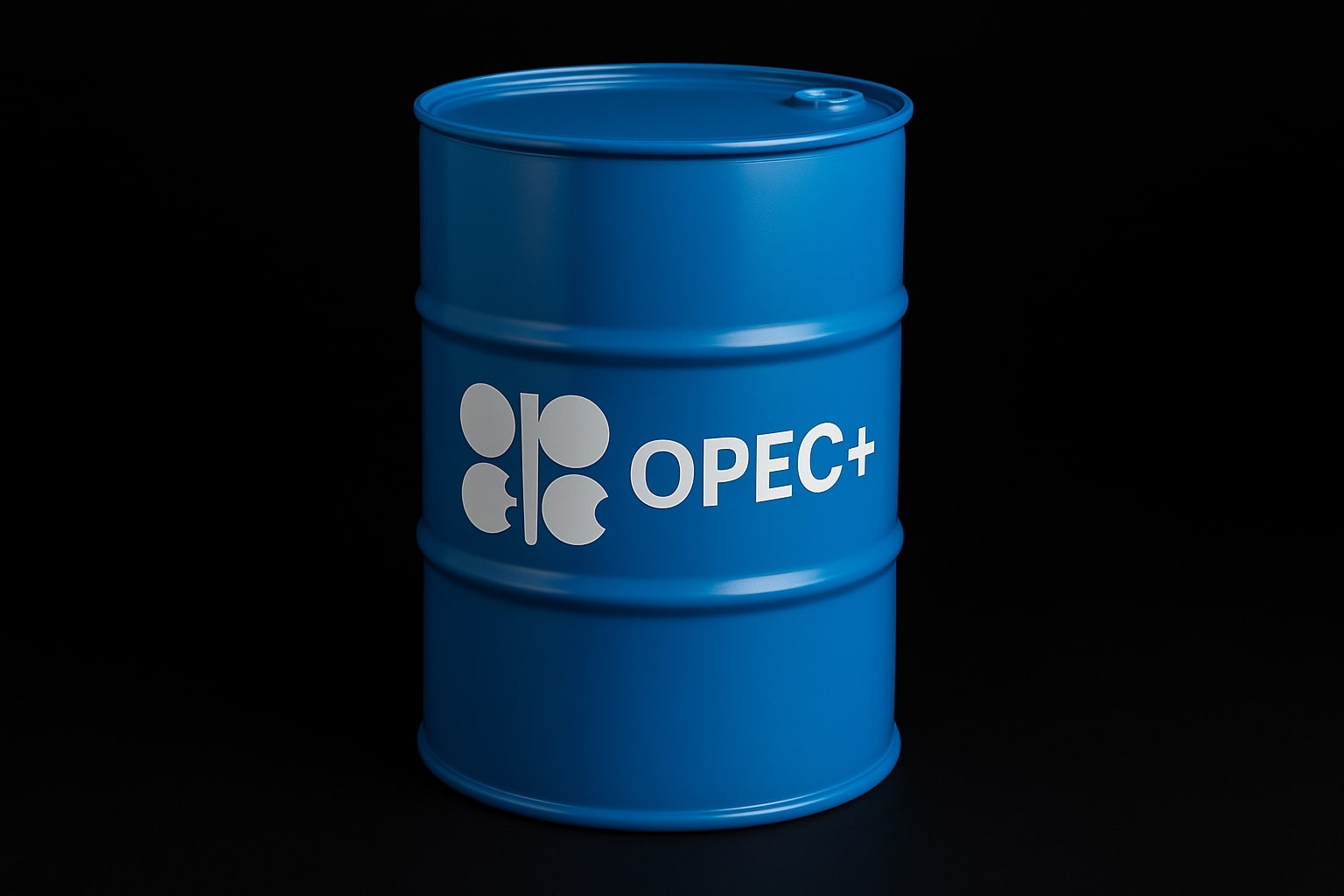
Natural Gas Price Drops as Oversupply and Weak Demand Push NG=F Toward $2.72
Record U.S. production, a 56 Bcf storage build, and tepid summer demand keep natural gas under bearish pressure despite LNG export strength | That's TradingNEWS
Natural Gas Futures Struggle as Storage Surplus and Weak Demand Cap Gains
Natural Gas (NG=F) remains locked in a bearish channel, unable to sustain rallies despite occasional intraday strength. September Nymex futures settled at $2.841/MMBtu, up just 0.5% on the day, as early gains faded following the U.S. Energy Information Administration’s (EIA) larger-than-expected 56 Bcf storage injection for the week ended August 8. This compares to a five-year average build of 33 Bcf and a rare 2 Bcf withdrawal in the same period last year, pushing inventories to roughly 7% above seasonal norms. The oversupply underscores the structural imbalance between production and consumption.
Technical Breakdown Points to $2.72, Then $2.48–$2.39 if Pressure Intensifies
Technically, prices have retreated from the $3.050 neckline of a head-and-shoulders pattern, confirming a deeper bearish phase. Multiple failed attempts to reclaim the $3.00 handle reinforce seller dominance. Momentum indicators remain negative, suggesting that a decisive break below $2.720 could accelerate declines toward $2.480 and potentially $2.390, levels already on traders’ radar. Thursday’s intraday low of $2.792 highlights aggressive selling ahead of $3.00 resistance.
Moderate Weather and Tropical Storm Erin Weigh on Cooling Demand
Summer weather has been milder than expected, limiting cooling-related power generation and thereby reducing natural gas demand. Forecasts from AccuWeather suggest Tropical Storm Erin could strengthen into a major hurricane near Bermuda and the U.S. East Coast, bringing cooler coastal temperatures and dampening electricity use — a bearish factor despite potential short-lived supply disruptions in the Gulf of Mexico. Offshore Gulf production accounts for only 2% of U.S. gas output, while over 40% of U.S. electricity generation is gas-fired, making demand shocks more impactful than supply interruptions.
LNG Exports Rebound as Freeport Facility Returns to Near Full Capacity
Freeport LNG’s Texas export facility has returned close to full operation, lifting U.S. LNG feedgas flows to 16.2 Bcf/d in August from 15.5 Bcf/d in July, just shy of April’s record 16.0 Bcf/d monthly average. While this has stabilized export demand, the bullish effect is being offset by overwhelming domestic oversupply and subdued summer power consumption.
Record Output Keeps Storage Builds Elevated
Lower 48 output in August is averaging 108.1 Bcf/d, slightly above July’s record of 107.9 Bcf/d. Even after a brief dip to 106.4 Bcf/d, production remains near all-time highs. This ensures that any demand shortfall quickly converts to storage surpluses, as shown by the latest injection figures. LSEG projects total Lower 48 demand, including exports, will ease from 111.9 Bcf/d this week to 111.5 Bcf/d next week — both higher than earlier forecasts but still insufficient to absorb record output.
Why $3.00 Remains an Impenetrable Barrier
Each approach toward $3.00 has met strong selling pressure, with market participants citing inventories at 6% above the five-year average as a key factor reducing buyer urgency. Without severe weather-driven demand spikes or substantial production cuts, these fundamentals make it challenging for NG=F to sustain a breakout above this level.
Regional Spot Prices Mirror Futures Weakness
Spot market action reflects the broader futures decline. Henry Hub slipped $0.015, while Algonquin Citygate fell $0.81 and Iroquois Zone 2 dropped $0.97 amid ample Northeast supply. PG&E Citygate eased $0.14, while SoCal Citygate edged up $0.085, showing localized strength but no national bullish reversal.
Bearish Short-Term Outlook With $2.48–$2.39 in Sight
With the neckline break confirmed, high storage levels, and a cooler East Coast outlook tied to Erin’s track, the near-term bias remains bearish. Market focus is on $2.72 as the next key support, with a likely slide into the $2.48–$2.39 range if selling accelerates. Any rally toward $3.00 is expected to meet strong resistance, with a fundamental shift — such as European winter demand spikes or aggressive U.S. output cuts — required to reverse the trend.
That's TradingNEWS
Read More
-
BITQ ETF Soars 66.55% as Bitcoin Blasts Past $124,000 — Crypto Equities Lead 2025 Rally
13.10.2025 · TradingNEWS ArchiveStocks
-
XRP ETFs XRPR, XRPI Slip as Ripple XRP-USD Holds $2.62 — SEC Fast-Track Could Ignite $20B
13.10.2025 · TradingNEWS ArchiveCrypto
-
Natural Gas Price Forecast - NG=F Steadies at $3.00 as U.S. Export Boom Tests Old Fields
13.10.2025 · TradingNEWS ArchiveCommodities
-
USD/JPY Price Forecast - Dollar to Yen Climbs to ¥152.28 as Japan’s Political Shakeup
13.10.2025 · TradingNEWS ArchiveForex



















